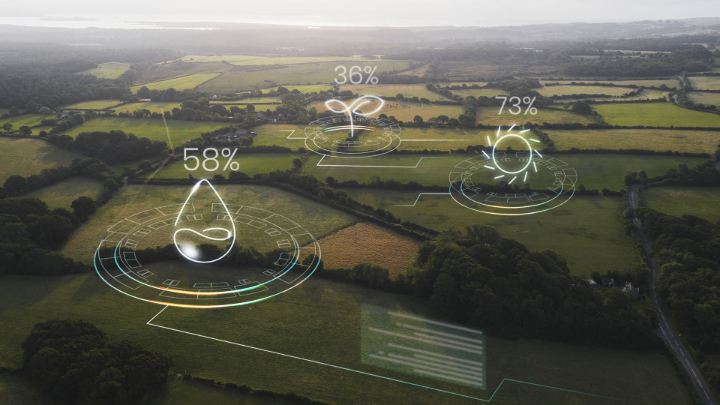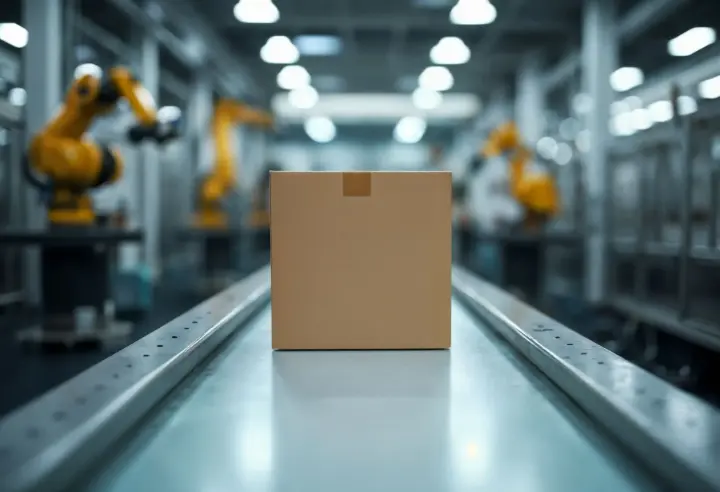The industrial packaging industry is rapidly evolving, driven largely by environmental concerns, technological advancements, and shifting consumer preferences. In 2025, companies are striving to stay ahead by embracing major trends that are reshaping how products are packed and shipped. Key focus areas include a powerful push toward sustainability and the adoption of automation and smart technologies. Additionally, innovative materials are emerging to improve efficiency and protection, and other industry shifts, such as regulatory changes and custom solutions, are influencing packaging practices. Below, we explore these major trends in industrial packaging and what they mean for businesses in 2025.
Sustainability in Industrial Packaging
Sustainability is no longer just a buzzword, it’s now a defining priority for packaging in 2025. Companies worldwide are transitioning to eco-friendly materials, reducing waste, and adopting designs that enable recycling or reuse. The goal is to shrink the packaging carbon footprint while meeting growing environmental regulations and consumer expectations. Some of the prominent sustainability trends include:
- Reducing plastic usage
Manufacturers are significantly cutting down conventional plastic in packaging, replacing it with more sustainable alternatives wherever possible. This shift not only addresses environmental concerns but also helps companies avoid fees or taxes on non-recycled plastics being enacted in some regions.
- Biodegradable and compostable options
There is a growing demand for packaging made from bioplastics (derived from plant-based sources) and other biodegradable materials. From bioplastic films to recycled cardboard inserts, these options maintain performance while making disposal eco-friendly. Such materials break down more easily after use, reducing long-term waste in landfills.
- Reciclable materials
Reuse and recyclability are being built into packaging design from the start. Companies are prioritizing materials and formats that can be recycled, re-used, or composted, keeping packaging in the loop rather than discarding it. This includes designing packaging that uses a single material type for easier recycling and investing in take-back or reuse programs.
Behind this sustainability push is also a wave of new laws and standards (discussed later) pressuring businesses to adopt greener packaging. In short, eco-conscious packaging is becoming standard operating procedure. Companies that innovate with sustainable packaging not only help the planet but also often find cost savings through material reduction and earn goodwill with environmentally conscious customers.

Automation and Smart Packaging
Automation is transforming industrial packaging operations at a rapid pace. In warehouses and production lines, tasks that once required extensive manual labor are now handled by robotics and intelligent machines. From automated case packers and palletizers to robotic arms sorting and sealing products, these systems boost throughput and consistency. In fact, packaging lines that incorporate advanced automation can dramatically improve productivity (some reports note productivity gains up to 77% with Industry 4.0 tech adoption). Automating repetitive packing tasks not only speeds up production and reduces errors, but also helps companies cope with skilled labor shortages by reallocating workers to higher-value roles. The latest AI-driven systems can even make real-time decisions on optimal packaging configurations and routing, streamlining the entire logistics flow.
Equally revolutionary is the rise of smart packaging and digitally enhanced logistics. Smart packaging refers to packages embedded with technology (sensors, RFID/NFC tags, QR codes) that can communicate information or interact with the user. For example, RFID tags and barcodes now allow real-time tracking of products through the supply chain. This enhances transparency and helps companies and their clients monitor location, temperature, or humidity of shipments to ensure quality. Such AI-driven logistics systems can automatically log data and even adjust storage conditions or routes if a problem is detected (for instance, rerouting a package if a delay is predicted). Smart packaging doesn’t just benefit the shipper; end consumers or industrial clients can scan QR codes on packaging to get interactive information – from usage instructions to authenticity verification – adding value beyond the product itself.
The push for automation also extends to warehouse management. Intelligent warehouses use IoT devices and AI analytics to coordinate packaging inventory, predict demand, and automate ordering of materials. By connecting packaging machines, conveyors, and inventory systems into a unified network, companies create a seamless, automated packaging ecosystem. The result is improved efficiency, lower operational costs, and a more resilient supply chain. Early adopters of advanced automation and smart packaging technology are gaining a competitive edge through faster turnaround times and superior traceability.

Innovative Materials for Efficiency and Protection
Another exciting trend in 2025 is the development of innovative packaging materials that offer improved strength, protection, and lightweight profiles. Traditional materials (like heavy wooden crates or thick plastic wraps) are being reengineered or replaced with high-performance alternatives that can do more with less. The emergence of these new materials is making industrial packaging both more sustainable and more effective. Notable material innovations include:
- High-performance bioplastics
New biodegradable polymers have been developed that mimic the strength and flexibility of conventional plastics while being eco-friendly. These plant-based plastics (e.g. made from corn starch or sugarcane) provide the necessary durability for industrial use but can break down faster after disposal. They allow companies to maintain protection standards and reduce environmental impact simultaneously.
- Fiber-based and recycled composites
Fiber-based packaging (such as advanced cardboard, molded pulp or fiber composites) is gaining popularity as an alternative to metal and plastic containers. These materials are lightweight yet remarkably durable, making them ideal for bulk transport and heavy items. Reinforced corrugated cardboard, for example, can replace some wooden packaging, saving weight and space while still protecting goods. Likewise, some manufacturers are using hybrid composites (mixing recycled plastics with fibrous materials) to create packaging that has superior strength-to-weight ratios.
- Advanced foams and coatings
To improve cushioning and barrier properties, companies are exploring next-generation solutions like starch-based foams and aerogels. Starch-based packing peanuts or foam inserts offer similar shock absorption to petrochemical foam but are biodegradable. Ultralight aerogel inserts can protect sensitive electronics with minimal weight. In addition, nano-coatings on packaging films are being used to enhance moisture or oxygen barriers without adding bulk, keeping contents safe (for example, preventing rust or spoilage) while allowing thinner packaging layers.
By investing in these innovative materials, businesses improve their operational efficiency (lighter packages mean lower shipping costs and easier handling) and product protection. The materials often tie back into sustainability as well—many are recyclable or made from recycled content, aligning with circular economy goals. In 2025 and beyond, we can expect continuous R&D in packaging materials, yielding solutions that make packaging smarter, greener, and tougher all at once.

Other Significant Industry Shifts
Beyond the headline trends of going green and going smart, several other shifts in industrial packaging are underway. These developments in regulations, processes, and customer demands are important for companies to watch, as they can greatly impact packaging strategies. Some of the notable shifts include:
- Regulatory changes and compliance
Governments around the world are enacting stricter rules on packaging sustainability and waste. For example, the European Union is rolling out a new Packaging and Packaging Waste Regulation (PPWR) and imposing taxes on non-recycled plastic to curb plastic waste. Likewise, several U.S. states have passed Extended Producer Responsibility (EPR) laws that require manufacturers to take on the cost of managing and recycling packaging materials. These regulations are forcing companies to redesign packaging with recyclability and waste reduction in mind, or else face penalties. Staying compliant is becoming a key part of packaging planning in 2025, effectively making sustainability not just an option but a mandate.
- Customized and industry-specific packaging solutions
The era of one-size-fits-all packaging is fading. Many industries now demand bespoke packaging tailored to their specific needs and regulations. For instance, chemical and pharmaceutical suppliers might require UN-certified drums or bags for hazardous materials, while food processors seek bulk containers that are food-grade and easy to sanitize. Custom-designed packaging ensures safety, compliance, and performance for niche applications. This shift is driven by both regulatory compliance and the desire to optimize packaging for the product’s characteristics (size, weight, fragility, etc.). In 2025, packaging providers are offering more customization options – from adjustable interior cushioning to made-to-order crate dimensions – to help businesses get exactly what they need. Such tailored solutions improve supply chain performance and customer satisfaction by reducing damage and fitting processes better.
- Focus on traceability and data integration
With the increasing complexity of global supply chains, companies are putting more emphasis on traceability and data in packaging. This goes hand-in-hand with smart packaging technologies: using tools like blockchain and cloud-based tracking systems, businesses can achieve end-to-end visibility of product shipments. Enhanced traceability not only helps in quality control and inventory management, but it’s also becoming important for meeting regulatory requirements (for example, tracking packaging materials for recycling quotas) and for providing transparency to consumers. Additionally, packaging operations are integrating with broader enterprise software (such as ERP systems) to synchronize with production and inventory data. This integration means packaging is not an isolated step, but a connected part of the manufacturing and logistics network, enabling just-in-time packaging and efficient resource use.
Overall, these shifts indicate that industrial packaging in 2025 is not just about the materials and machines, but also about strategy and compliance. Companies must navigate a landscape where laws demand eco-friendly action, customers expect personalized solutions, and data is as critical as the box or crate itself. Those who stay agile and informed about these changes will be better positioned to adapt without disruption.
As businesses adapt to these trends, having the right supply partners is crucial. Brexia stands out as a leading distributor of industrial products, with deep expertise in industrial packaging. We offer a broad range of product categories—from adhesives and sealants, cable and wire, electrical and electronics, to material handling equipment, packaging supplies, safety gear, and tools—covering every facet of your operational needs. Brexia’s team stays at the forefront of packaging innovations and regulations, ensuring we can provide high-quality, compliant solutions tailored to your requirements. Whether you’re looking to implement sustainable packaging alternatives or automate your packaging line, Brexia has the products and know-how to support your goals. Our commitment to quality and customer success makes us the go-to partner for companies seeking reliable industrial solutions in a rapidly changing world. Let Brexia help you navigate the future of industrial packaging with confidence and efficiency.